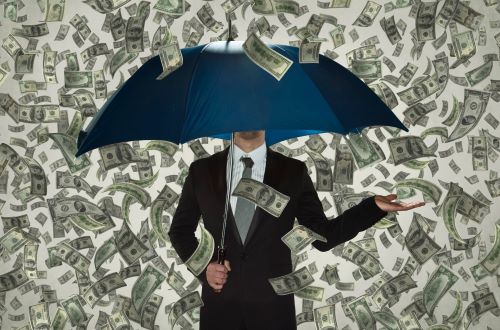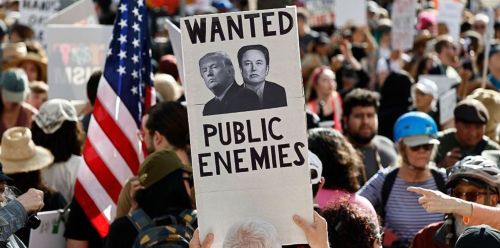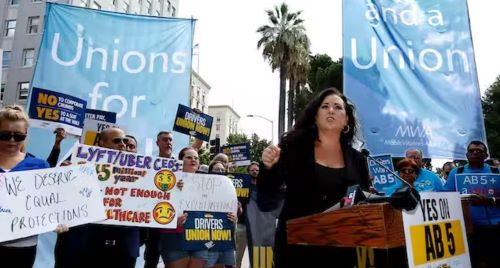

In the end, the One Big Beautiful Bill may be remembered not for its size or its branding, but for what it left broken in its wake.

By Matthew A. McIntosh
Public Historian
Brewminate
A Familiar Promise, Repackaged for Power
When President Trump announced his new “One Big Beautiful Bill” in early 2025, he described it with characteristic flair – sweeping, simple, and supposedly transformative. Like many of his proposals, it was framed as a gift to ordinary Americans. The rhetoric emphasized strength, growth, and fairness. The bill, Trump claimed, would “cut taxes bigger than ever before” and “unleash the American economy like never before.”
But beneath the showmanship lies something less novel and more familiar: another sweeping tax cut package that overwhelmingly benefits the wealthiest Americans and entrenches the very inequalities that have hollowed out the middle class for decades.
This is not the first time Trump has pushed such a plan. His 2017 Tax Cuts and Jobs Act slashed corporate rates and created temporary individual relief that largely expired by 2025. His new bill seeks to make those changes permanent, and expand them, while offering little in the way of structural relief for working families struggling under rising costs, wage stagnation, and eroding public services.
What the 2025 Bill Actually Does
Trump’s new tax package includes a permanent corporate tax rate of 15 percent, down from the already reduced 21 percent under his 2017 law. It eliminates the estate tax entirely, significantly expands exemptions for capital gains, and lowers the top marginal income tax rate from 37 percent to 30 percent.
At the same time, it reduces funding for the IRS’s enforcement division and removes provisions for auditing high-income filers, a move that effectively makes tax evasion easier for those who can afford armies of accountants.
For the middle class, the benefits are thin and largely symbolic. The standard deduction sees a modest bump, and some child tax credits are adjusted, but the overall impact on household finances is minor. Independent analyses, including projections from the nonpartisan Tax Policy Center, estimate that households earning over $1 million will see an average annual benefit of nearly $100,000 under the new plan. Households earning between $50,000 and $100,000 may see tax savings in the range of $500 to $900, barely enough to offset a year’s increase in rent, childcare, or groceries.
A Deepening Divide

The timing of the bill makes its priorities even starker. In 2025, the American economy is facing a series of overlapping pressures: elevated inflation in key sectors like housing and healthcare, weakened public infrastructure, and a federal deficit that continues to swell. Middle-class wages have failed to keep up with costs, and millions of families are still grappling with pandemic-era debt.
This bill does not address those issues. Instead, it pours fuel on the fire of inequality by increasing the wealth gap between the top and everyone else. By design, it accelerates capital accumulation for the ultra-wealthy while asking lower-income Americans to be content with leftovers.
It also further undermines the government’s capacity to provide public goods. With corporate taxes gutted and enforcement neutered, revenue shrinks. Education, transportation, environmental protection, and public health systems, already stretched thin, will be under renewed threat.
And the burden does not vanish. It shifts. When the wealthy pay less, the middle class and working poor eventually pay more, whether through higher state taxes, fewer services, or rising interest rates driven by deficit borrowing.
The Political Theater of Populism
What makes the bill particularly striking is its detachment from the language used to sell it. Trump continues to speak the language of populism, casting himself as a champion of “forgotten Americans.” His speeches are filled with invocations of hardworking families, small businesses, and the dignity of labor.
But his policy choices point in the opposite direction.
The 2025 tax plan is not a populist correction. It is a reaffirmation of supply-side economics, the belief that enriching the already wealthy will somehow lift the rest of society. Decades of data challenge that theory. Since the Reagan era, wealth has trickled upward, not down. Trump’s first tax law in 2017 was no exception. Corporate profits soared, but wage growth for most workers remained flat. Stock buybacks hit historic highs. The promised job creation never fully materialized.
Now, with his second term well underway, Trump is offering the same prescription, only in larger doses.
What Gets Left Behind

One of the more insidious consequences of this bill is what it chooses not to fund. Affordable housing initiatives are sidelined. Investments in clean energy and climate resilience are shelved. Public college tuition support is missing entirely. Even modest healthcare reforms that would reduce premiums or expand Medicaid are absent.
Instead, the emphasis is on deregulation, privatization, and short-term boosts to financial markets. The middle class, which in theory should benefit from long-term investments in shared prosperity, is treated more as a political talking point than a policy priority.
For low-income Americans, the situation is worse. Several tax credits that had been temporarily expanded during earlier COVID recovery efforts are allowed to expire under the new plan. Food assistance and housing subsidies are cut to offset some of the revenue loss from high-end tax breaks. The result is a system that rewards those at the top while penalizing the vulnerable for being poor.
The Illusion of Growth
Supporters of the plan argue that it will supercharge economic growth. They point to rising stock indices and business confidence. But this is not the same as shared prosperity.
GDP may rise. Asset prices may climb. But without wage gains, affordable services, or social investment, the vast majority of Americans will not feel the benefit. Economic growth, in this case, becomes an illusion, impressive in appearance, hollow in experience.
Even Wall Street analysts have voiced caution. Goldman Sachs warned that the bill’s deficit impact could place upward pressure on interest rates, potentially slowing consumer lending and choking off small business credit. In other words, the very groups this bill claims to help could end up paying more through the back door.
A Vision of the Future, or a Warning?
Trump’s 2025 tax plan is not just a set of numbers. It is a statement about what kind of country he envisions. One where wealth is shielded, not shared. One where the top percentile is catered to while the majority is pacified with slogans. One where the economy exists to serve capital first and people second.
This is not fiscal conservatism in any meaningful sense. It is a strategy of selective generosity, where largesse is reserved for the powerful and austerity is imposed on the rest.
If passed in full, the bill would represent one of the most regressive restructurings of the U.S. tax code in modern history. And its effects would last far beyond Trump’s second term.
In the end, One Big Beautiful Bill may be remembered not for its size or its branding, but for what it left broken in its wake.
Originally published by Brewminate, 07.24.2025, under the terms of a Creative Commons Attribution-NonCommercial-NoDerivatives 4.0 International license.


